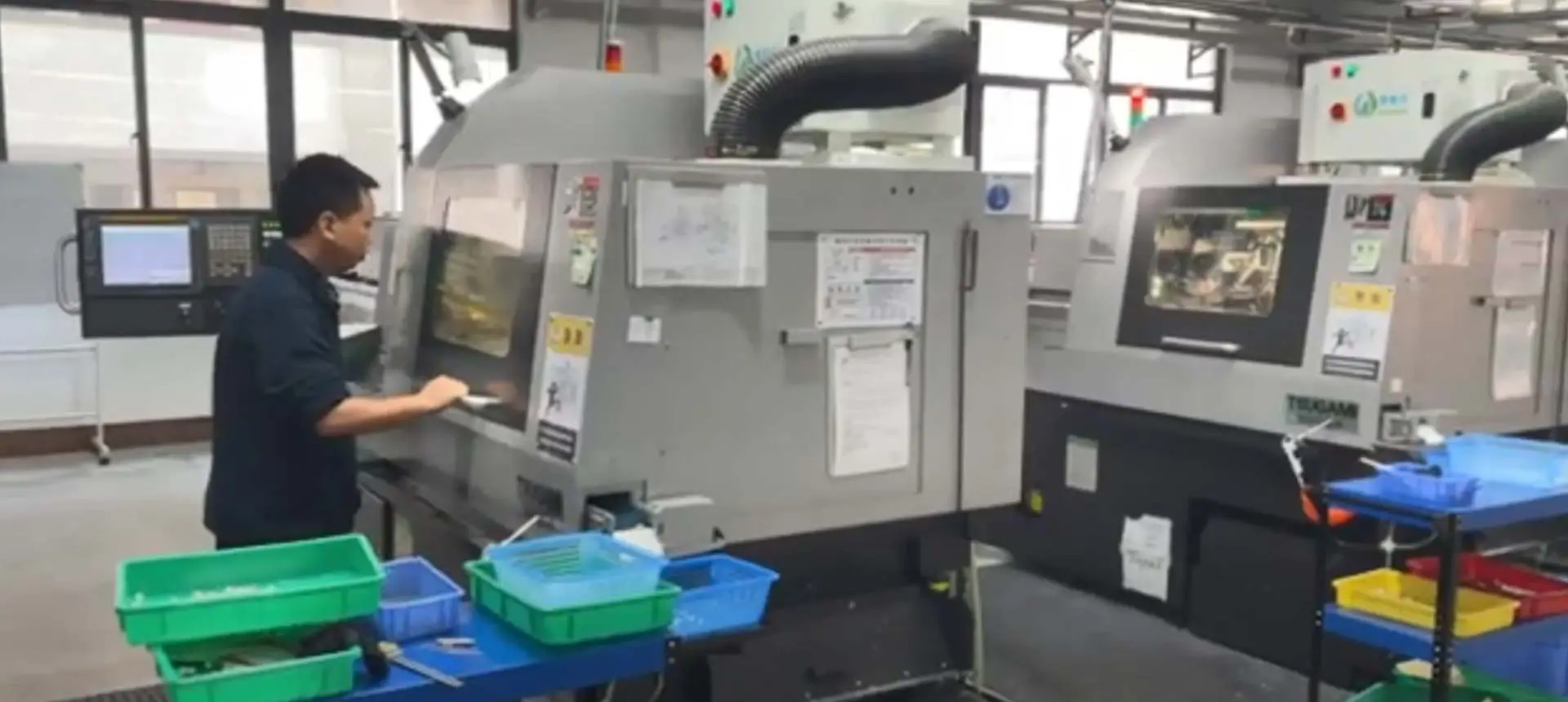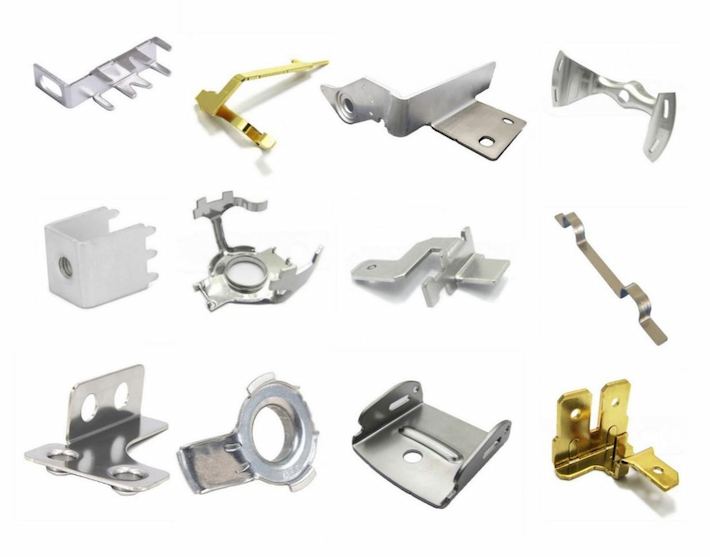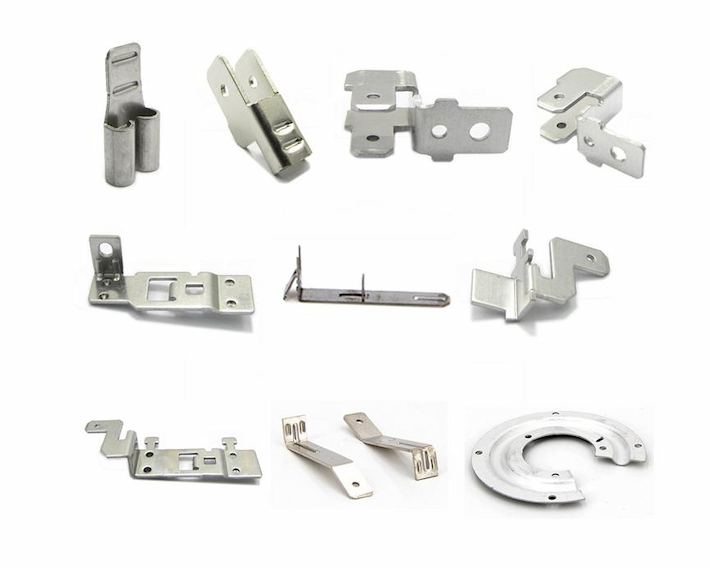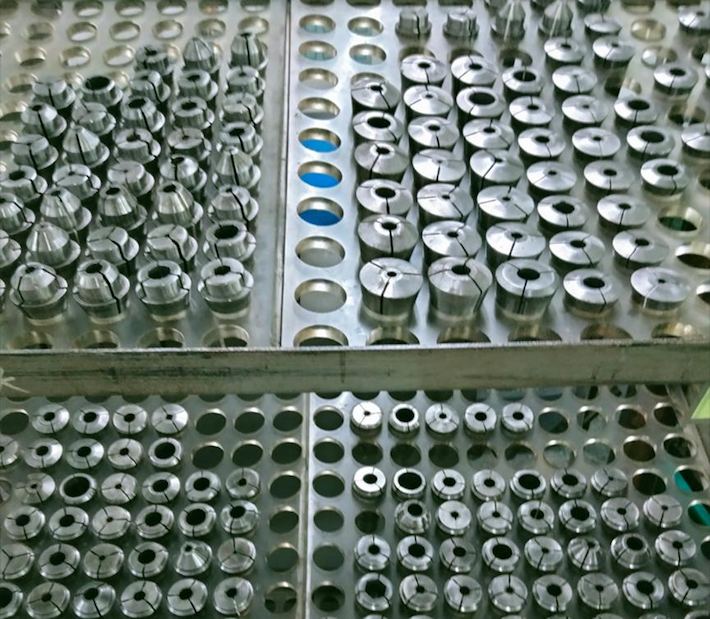
Die Qualitäts kontrolle von Stanz teilen umfasst verschiedene Maßnahmen und Prozesse, um sicher zustellen, dass die Komponenten den erforderlichen Spezifikationen und Standards entsprechen. Dies umfasst die Verwendung fortschritt licher Inspektions werkzeuge, die Durchführung visueller Inspektionen, die Durchführung von Dimensions prüfungen und die Durchführung von Leistungs tests. Durch strenge Qualitäts kontrolle können Stanz teile überprüft werden, um die Kunden anforderungen zu erfüllen, die Produkt qualität zu verbessern und Mängel zu reduzieren, was letztendlich zu einer höheren Kunden zufriedenheit und einer besseren Geschäfts leistung führt.
Die Edelstahl prägungen von HHC Precision sind für ihre überlegene Festigkeit, Haltbarkeit und Korrosions beständigkeit bekannt. Fortschritt liche Stanz prozesse können komplexe Formen und Designs herstellen, um den Anforderungen verschiedener Branchen wie Automobil, Luftfahrt, Elektronik, Medizin und Lebensmittel verarbeitung gerecht zu werden. Zu den Merkmalen des Stanz ens von Stanz teilen gehören:
Hohe Festigkeit und Haltbarkeit:Geeignet für hohe Lasten und raue Umgebungen.
Aus gezeichnete Korrosions beständigkeit:Widersteht Feuchtigkeit, Chemikalien und hohen Temperaturen.
Präzisions fertigung:Die kunden spezifischen Bedürfnisse der Kunden erfüllen, hohe Qualität und Wirtschaft lichkeit sicherstellen.
Die Verwendung von Stanz teilen in der Herstellung bietet zahlreiche Vorteile, einschl ießlich hoher Produktions effizienz, Kosten effizienz und Genauigkeit. Stanz teile können in großen Mengen mit minimalem Abfall hergestellt werden, was zu niedrigeren Produktions kosten führt. Sie sind auch sehr genau und ermöglichen eine gleich bleibende Qualität und eine verbesserte Produkt leistung. Darüber hinaus sind Stanz teile vielseitig und können an bestimmte Konstruktion sanford rungen angepasst werden, sodass sie für eine Vielzahl von Anwendungen in verschiedenen Branchen geeignet sind.
Strikter Liefer plan: Die strikte Einhaltung der Liefer pläne ist sicher gestellt. Bei gefüllten Artikeln werden Bestellungen sofort nach Erhalt mit Optionen für See-, Land-oder Luftfracht versandt. Für maßge schneiderte Produkte garantieren integrierte Design-to-Manufac turing-Prozesse eine schnelle Lieferung innerhalb von 1-4 Wochen.
Qualitäts sicherung: Ein systematisches Qualitäts inspektions system und intelligente Tests von 24-Stunden-Maschinen gewährleisten die Produkt qualität während des gesamten Herstellungs prozesses.
Effiziente Produktions prozesse: Unsere Produktions prozesse sind hoch effizient und umfassen Stanzen, CNC-Bearbeitung, Bearbeitungs zentren, Dehnen, Galvani sieren, Beizen, Passivieren, Reinigen, Schleifen, Montieren und mehr. Diese Prozesse ermöglichen es uns, qualitativ hochwertige Dienstleistungen und wettbewerbs fähige Produkte bereit zustellen.
Geschätzter Veteran in der Hardware-Fertigung: Mit über 23 Jahren Erfahrung und einer Produktions werkstatt von 33.000 Quadratmetern haben wir uns als vertrauens würdiger Marktführer in der Branche etabliert und verfügen über einen eigenen Industrie park.
In der Welt der Metall herstellung spielen zwei gängige Prozesse, das Stanzen und Stanzen, eine entscheidende Rolle bei der Formgebung von Materialien für verschiedene Anwendungen. Obwohl sie Ähnlichkeiten aufweisen, ist es für Hersteller und Ingenieure wichtig, die Haupt unterschiede zwischen Stanzen und Stanzen zu verstehen. Dieser Artikel befasst sich mit den Nuancen, die diese Prozesse auszeichnen, und gibt Einblicke, wann die einzelnen Methoden für optimale Ergebnisse verwendet werden müssen.
Stempeln:
Beim Stempeln wird eine Matrize verwendet, um Bleche oder Streifen zu formen und zu formen. Die Matrize, typischer weise aus gehärtetem Stahl, enthält das gewünschte Muster oder Design. Eine Presse übt Kraft auf das Material aus, wodurch es die Form der Matrize annimmt. Dieser Prozess wird üblicher weise zum Erstellen komplizierter Formen, Muster oder Logos auf Blech verwendet.
Stanzen:
Beim Stanzen hingegen wird ein Teil des Materials entfernt, um ein Loch oder eine Öffnung zu erzeugen. Es wird ein Stanz-und Stanzset verwendet, wobei der Stempel seinen Weg durch das Material erzwingt, um das gewünschte Loch oder die gewünschte Form zu erzeugen. Stanzen ist besonders effektiv für die Herstellung von einfachen und konsistenten Löchern in verschiedenen Metall komponenten.
Stempeln:
Das Stempeln wird für Anwendungen bevorzugt, bei denen komplizierte Designs, Muster oder geprägte Merkmale erforderlich sind. Es wird häufig in Branchen wie Automobil, Elektronik und Geräte herstellung für dekorative oder funktionale Zwecke verwendet.

Stanzen:
Das Stanzen eignet sich gut für Anwendungen, bei denen einfache und gleichmäßige Löcher erforderlich sind, z. B. bei der Erstellung von Halterungen, Paneelen oder Komponenten, die gleichmäßige Öffnungen erfordern. Es ist weit verbreitet in Branchen wie Bau, Metall herstellung und HVAC.

Während Stanzen und Stanzen im Bereich der Metall herstellung eine gemeinsame Basis haben, liegt die Unterscheidung in ihren spezifischen Anwendungen und den erzielten Ergebnissen. Das Stempeln zeichnet sich durch komplizierte Designs und Muster aus, während das Stanzen die Methode der Wahl zum Erstellen präziser Löcher ist.
HHC (Haoha ichang) bietet ein Spektrum an Bestell optionen, um den unterschied lichen Kunden bedürfnissen gerecht zu werden. Vom maßge schneider ten Sample-Prototyping bis hin zur kleinen, mittleren und großen Produktion bietet HHC eine umfassende Zusammenarbeit. HHC verspricht nahtlose Integrations dienste von der Proben validierung bis zur Massen produktion.

1. maßge schneiderte Probe Prototyping:
HHC erkennt die Bedeutung der Prototypen entwicklung im Produkt design-und Validierung prozess an. Mit einem speziellen Fokus auf die Erfüllung der Kunden spezifikationen bietet HHC maßge schneiderte Muster-Prototyping-Services. In dieser Phase können Kunden die Machbarkeit, das Design und die Funktional ität ihrer Komponenten bewerten, bevor sie sich auf größere Produktions mengen festlegen.
2. kleine Chargen aufträge:
Für Projekte, die begrenzte Mengen erfordern, nimmt HHC kleine Chargen aufträge mit Präzision und Effizienz auf. Kleine Chargen bestellungen sind ideal für erste Markt tests, um sicher zustellen, dass Kunden ihre Produkte mit minimalem Risiko und optimaler Qualität einführen können.
3. Mittlere Chargen aufträge:
Wenn Unternehmen expandieren, entsteht der Bedarf an mittleren Chargen bestellungen. HHC wechselt nahtlos von kleinen zu mittleren Produktions mengen und bietet die gleiche Liebe zum Detail und Qualitäts sicherung. Diese Flexibilität entspricht den sich entwickelnden Anforderungen von Kunden in verschiedenen Branchen.
4. Große Chargen aufträge:
Die Fähigkeiten von HHC erstrecken sich auf die Produktion in großem Maßstab und richten sich an Kunden mit erheblichen Mengen anforderungen. Mit fortschritt licher Technologie und einem optimierten Produktions prozess gewähr leistet HHC die effiziente und zeitnahe Lieferung von Großaufträgen, ohne Kompromisse bei der Qualität einzugehen.
Das Engagement von HHC für die Bestell flexibilität zeichnet es im Bereich der Metall herstellung aus. Von maßge schneider ten Muster prototyping bis hin zu großen OEM-Stanz produktions mengen bietet HHC ein nahtloses und umfassendes Leistungs spektrum. Kunden können darauf vertrauen, dass HHC in jeder Phase des Produktions prozesses navigiert, um sicher zustellen, dass ihre einzigartigen Anforderungen mit Präzision und Effizienz erfüllt werden.
Beim Metalls tempeln, auch Pressen genannt, werden Bleche oder-streifen mit einer Stanz presse und Matrizen in die gewünschten Formen und Konfigurationen geformt. Bei diesem Herstellungs prozess wird Druck auf das Metallwerk stück ausgeübt, wodurch es sich verformt oder verdrängt, wodurch die gewünschte Form oder das gewünschte Muster erzeugt wird. Der Stanz prozess von HHC umfasst Techniken wie Schneiden, Stanzen, Biegen, Dehnen, Prägen und Prägen.
Wenn ein einzelner Stanz vorgang nicht die erforderliche Form erreichen kann oder wenn die Werkstück form sehr komplex ist, verwenden wir progressives Stanzen. Innerhalb eines einzelnen Matrizen-Sets ist jede Station mit einem oder mehreren grundlegenden Stanz prozessen ausgestattet, um die Bearbeitung eines bestimmten Teils des gestanzten Werkstücks abzuschließen. Dies beinhaltet eine kontinuierliche Abfolge von Operationen, einschl ießlich Schneiden, Biegen, Stanzen, Pressen und Formen.
Wir sind in Shenzhen ansässig und haben unseren eigenen Industrie park in Huizhou. Mit 23 Jahren Erfahrung in der Hardware-Fertigung haben wir ein Team von technischen Experten aufgebaut, die sich der kontinuier lichen Verbesserung widmen, und ein Team von erfahrenen Managern. Dank fortschritt licher Ausrüstung und institution eller Unterstützung kann HHC sein Know-how in Design und Herstellung in der Hardware-Industrie nutzen, qualitativ hochwertige Produkte und Dienstleistungen sicherstellen und angemessene Gewinne erzielen. Daher sind wir zuversicht lich, jederzeit Risiken zu begegnen. Sie sind willkommen, unsere Firma zur Inspektion zu besuchen. A1 Gebäude, Industrie park Rong chang, Hedong-Zone Nr. 440, Hengkeng, GuanLan, Bezirk Longhua, Stadt Shenzhen, Provinz Guangdong, China
HHC produziert eine Vielzahl von Stanz teilen, einschl ießlich Stretching-Typ, Flansch-Typ, kleine Halterung, Verdrahtung terminal-Typ, Befestigungs clip-Typ, Feder platten typ. Connector-Terminal-Typ und Terminal-Stück-Typ-Produkte. Diese sind weit verbreitet in Haushalts geräte komponenten, Automobil komponenten, neuen Energie speicher industrien, Unterhaltung elektronik komponenten, kleinen Flugzeugen, Kommunikation radar und der medizinischen Industrie.
Um die besten Materialien für gestempelte Produkte zu bestimmen, müssen Faktoren wie funktionale Anforderungen, Materiale igen schaften, Betriebs umgebung und Kosten berücksicht igt werden. Beispiels weise wird die Aluminium legierung 7075-T6 üblicher weise in Fahrzeug aufhängung systemen verwendet, während 45 # Stahl häufig in Fahrzeug übertragungs systemen verwendet wird und 304 Edelstahl häufig für Auspuff messungen verwendet wird. Messing C26000 wird üblicher weise in Fahrzeug heizkörpern verwendet, und die Kupfer-Nickel-Legierung C70600 wird unter anderem häufig in Bremssystemen gefunden. Wir geben die besten Lösungs empfehlungen basierend auf den spezifischen Bedingungen der Kunden anwendung.


